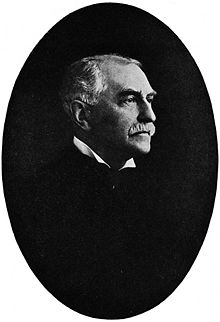South End House
It stressed education and study, but gradually extended its activities until it contributed in a multitude of ways to the life of Boston, particularly to the south End neighborhood.
[1] The house was controlled by a council of which William Jewett Tucker was the chairman; but the active work was carried on by a number of resident members.
He desired to make the privileged of service to the unprivileged; to gather about him in the East End of London a group of men who should come from Oxford or Cambridge, as Arnold Toynbee had come, and share the rich happiness of their intellectual and social life with those from whom much of this joy had been barred by arbitrary and accidental environment.
The results of Wood's study he put into a book entitled English Social Movements, and in the light of this experience, the Andover House was opened.
[6] The Andover House Association, which stood responsible for the work, however, represented from the beginning a large variety of persons having no identity of interest except that in the more progressive lines of social activity.
They participated in certain local societies of the people's own; they served on a local committee of the associated charities; they acted upon the managing board of different charitable institutions, besides rendering a large amount of irregular service in such causes; they cooperated as far as possible, according to their particular inclination, with the work of the churches in the neighborhood, though they avoided the very appearance of proselytism; and this not merely as a matter of policy, but of principle.
[7] The House was not meant to be an institution foisted upon the neighborhood, but simply an influence which would act in support and confirmation of such good influences as were already in action; thus, the House undertook very little formal educational work, because the educational system of Boston, including evening elementary schools and the evening high school, so well filled the need in that particular.
The money with which to buy, build and maintain the holdings of the South End House was gathered either by the personal work of Woods, or by reason of confidence in him.
[7] There was instruction in nursing, housekeeping, cooking, playacting, sloyd, basketry, millinery, dressmaking, lacemaking carpentry, printing.
There was collection of stamp savings, probation work in the juvenile court, a room registry of approved houses, a music school, and close cooperation with a district conference of the Associated Charities.
[6] The residents of the House and a number of other persons who were actively interested arranged two Free Art Exhibitions, held by permission, in 1895, in a large hall owned by the city.



